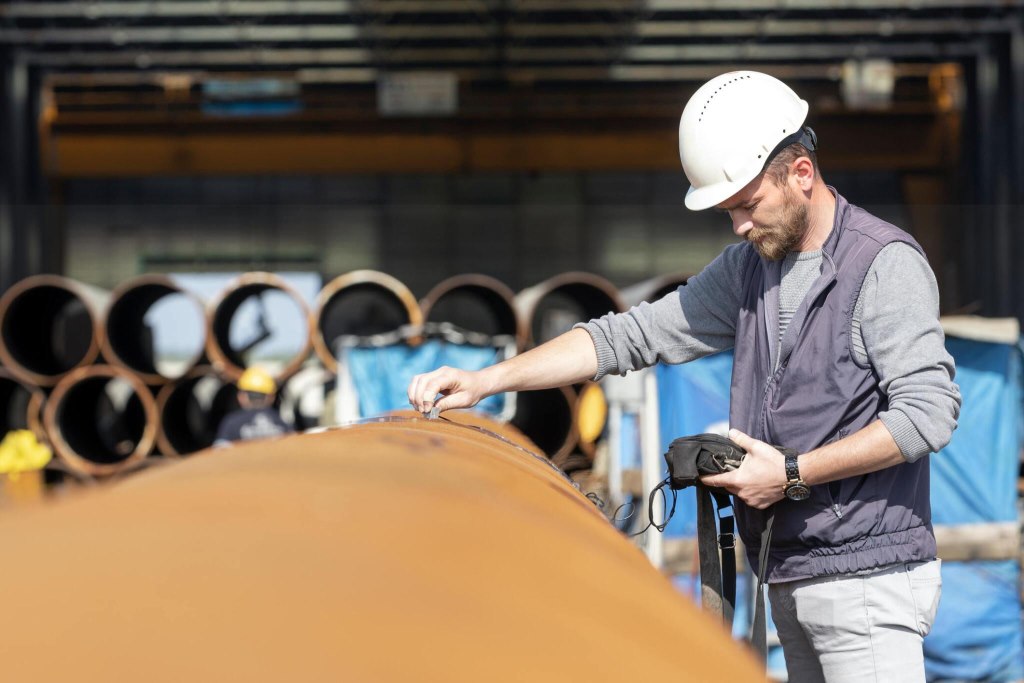Metal stamping is a cornerstone process in the automotive industry, influencing vehicle design and production significantly.
This technique uses dies and stamping presses to shape metal sheets into various components. Its importance goes beyond production, impacting vehicle performance, safety, and aesthetics. Metal stamping’s precision, efficiency, and cost-effectiveness shape the mobility landscape.
Precision and Complexity
1. Design Flexibility: Metal stamping’s prowess lies in its ability to fashion complex geometries and contours, making it a preferred method for crafting intricate automotive parts like brackets, panels, and structural components.
2. Tight Tolerances: By maintaining razor-sharp tolerances, US Machine & Tool metal stamping ensures components align with precision, a critical factor in enhancing mechanical systems’ functionality and overall vehicle performance.
3. Repeatability: The process guarantees unwavering consistency, minimizing errors and ensuring each component meets stringent specifications, a hallmark of quality production in the automotive realm.
Efficiency and Cost-effectiveness
1. High-Volume Production: With its high-speed capabilities, stamping churns out large quantities of parts swiftly, making it a linchpin for mass production in the automotive sector.
2. Reduced Material Waste: By optimizing metal sheet usage, stamping curtails material wastage, driving down production costs and bolstering efficiency.
3. Automation: Embracing automation, and stamping slashes labor expenses, boosts throughput, and bolsters the competitiveness of automotive manufacturers on the global stage.
Lightweighting and Sustainability

1. Advanced Materials: Metal stamping accommodates cutting-edge materials like high-strength steels and aluminum alloys, pivotal in the lightweighting drive within the automotive industry.
2. Recyclability: Championing recyclable materials, stamping champions sustainability in automotive manufacturing, aligning with eco-conscious initiatives.
3. Fuel Efficiency: By crafting lightweight components, stamping aids in enhancing fuel efficiency and curbing emissions, aligning with global sustainability endeavors.
Safety and Functionality
1. Structural Integrity: Metal stamping engineers components with robust structural integrity, ensuring vehicles remain safe and durable across diverse driving conditions.
2. Crashworthiness: Crucial in crafting crash-relevant parts, stamping fortifies vehicle safety and crashworthiness, a cornerstone of automotive design.
3. Functional Integration: Metal stamping facilitates seamless integration of functional features into components, streamlining assembly processes and reducing the need for additional parts.
Aesthetics and Customization
1. Design Freedom: Enabling the creation of visually striking and distinctive designs, stamping empowers automotive manufacturers to cater to diverse customer preferences and stand out in a competitive market.
2. Surface Finishing: Offering a canvas for various surface finishing techniques, stamping elevates the visual appeal and durability of automotive components.
3. Badges and Emblems: Serving as a key player in badge and emblem production, stamping plays a pivotal role in branding and identity within the automotive sector.
Innovation and Future Trends

1. Smart Manufacturing: Embracing cutting-edge technologies like Industry 4.0, artificial intelligence, and data analytics, stamping propels automotive manufacturing towards enhanced efficiency, quality, and flexibility.
2. Electric Vehicles: Metal stamping spearheads the production of electric vehicle components, including battery enclosures and electric motor housings, driving innovation in the realm of electric mobility.
3. Autonomous Vehicles: Anticipated to fuel the development of autonomous vehicles, stamping churns out sensors, cameras, and advanced components crucial for self-driving technology, shaping the future of mobility.
Advanced Technologies and Safety Features
1. Sensors and Devices: Metal stamping in automotive manufacturing supports the integration of advanced sensors and devices, enhancing vehicle safety and performance. These components are crucial for self-driving technology, collision detection, and other critical systems.
2. Mixed Material Joining: Metal stamping enables the joining of dissimilar metals with different thicknesses, ensuring the secure integration of various materials required for advanced technologies and safety features.
3. Security and Confidentiality: Metal stamping providers prioritize the security and confidentiality of prototype projects, implementing customized measures to protect sensitive information and ensure the utmost confidentiality.
Design and Engineering
1. Prototype Stamping: Metal stamping plays a pivotal role in prototype manufacturing, allowing for the creation of test units and prototypes for new production vehicles, semi-trucks, and airplanes.
2. Tool Design and Manufacturing: Metal stamping providers offer in-house tool design and manufacturing services, ensuring precision, consistency, and efficiency in the stamping process.
3. Simulation and Analysis: Advanced software tools like AutoForm enable finite element analysis, die form simulation, and 3D laser scanning, ensuring that products meet exact specifications.
Quality Control and Metallurgy

1. Quality Systems: Metal stamping providers utilize world-class quality systems to ensure optimal results in manufacturing processes, with quality laboratories for tensile strength, hardness testing, and weld failure analysis.
2. Metallographic Laboratory: Advanced metallographic laboratories are used for R&D, hot stamping material inspection, product validation, and weld failure analysis, ensuring the highest quality standards in stamping.
3. Non-Destructive Testing (NDT): Implementing cutting-edge NDT techniques such as ultrasonic testing, radiographic testing, and magnetic particle inspection for detecting internal defects, cracks, and discontinuities without altering the physical properties of the material, ensuring comprehensive quality assurance in stamping processes.
Advanced Materials and Sustainability
1. Sustainable Innovations: The integration of advanced materials like high-strength steels and aluminum alloys supports the automotive industry’s sustainability goals, promoting resource efficiency and reducing environmental impact.
2. Lifecycle Considerations: Metal stamping processes consider the entire lifecycle of automotive components, from material selection to end-of-life recycling, ensuring sustainability throughout the product’s lifespan and minimizing environmental footprint.
3. Eco-Friendly Coatings: Metal stamping techniques are evolving to include eco-friendly coating options, such as water-based paints and powder coatings, further enhancing the sustainability of automotive components while reducing VOC emissions and environmental pollution.
Human-Centric Design and Ergonomics
1. User Experience Focus: Stamping incorporates ergonomic considerations into the automotive component design, prioritizing user comfort, accessibility, and safety to enhance the overall driving experience and accommodate diverse user needs.
2. Human-Machine Interface: Metal-stamped components contribute to the design of intuitive human-machine interfaces within vehicles, facilitating seamless interaction between drivers and automotive systems for improved usability and functionality.
3. Adaptive Seating Solutions: Stamping techniques are utilized to create adaptive seating solutions that adjust to individual passengers’ needs, providing enhanced comfort and support while driving and promoting ergonomic well-being for occupants.
Conclusion
Metal stamping is vital in the automotive industry, providing solutions beyond production. It covers precision, efficiency, cost-effectiveness, lightweighting, safety, functionality, aesthetics, and innovation.
As automotive tech evolves, stamping remains crucial in shaping mobility, fostering innovation, and enhancing manufacturing excellence.










